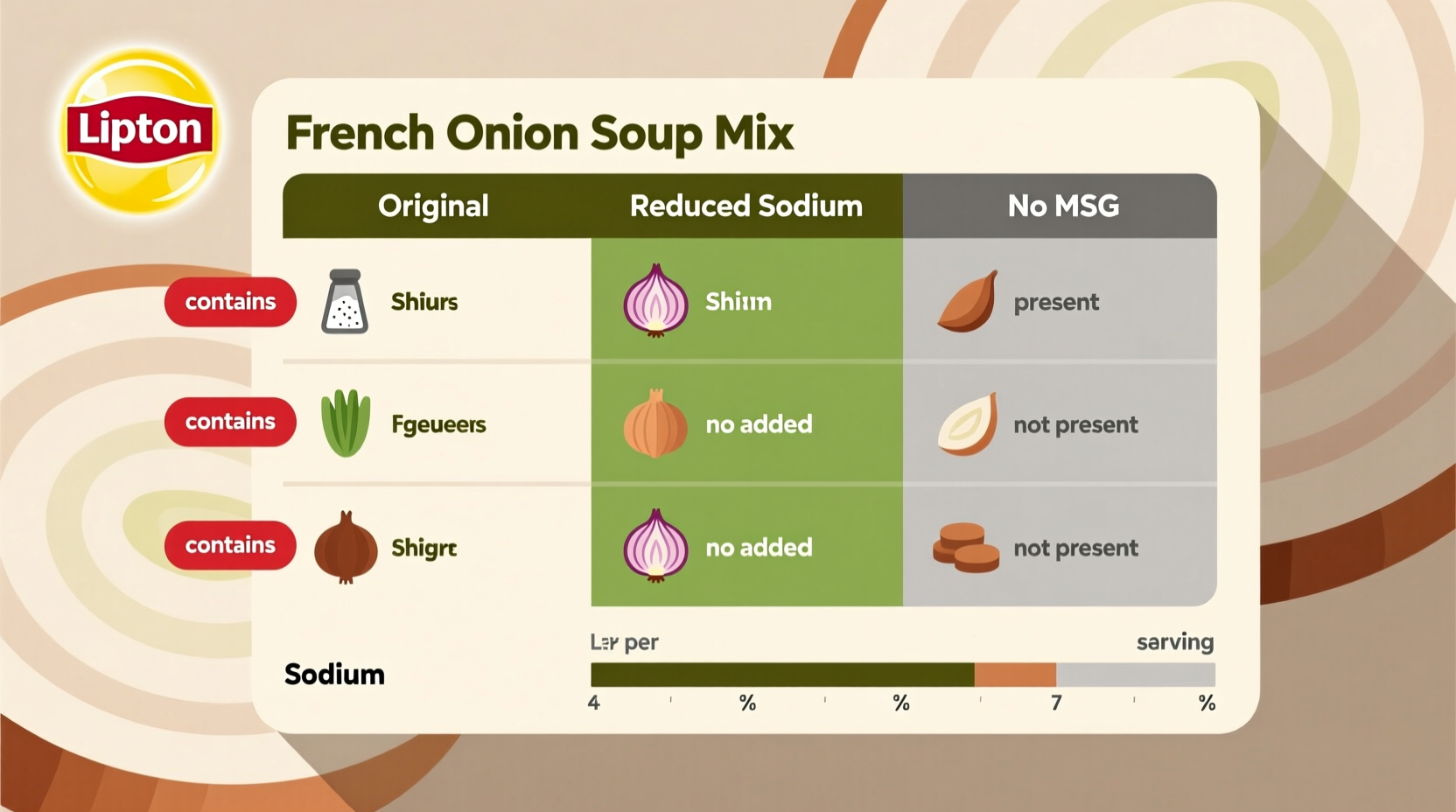That unassuming yellow packet in your pantry holds remarkable culinary potential. Lipton French Onion soup mix isn't just for dip—it's a flavor powerhouse that professional chefs quietly rely on for consistent results. Understanding its composition and proper application unlocks restaurant-quality dishes with minimal effort.
The Science Behind the Yellow Packet
Contrary to popular belief, Lipton French Onion isn't actually soup mix but a concentrated flavor enhancer. Its magic comes from three key components working in harmony:
- Dehydrated onion varieties (yellow and red) providing sweet and pungent notes
- Hydrolyzed vegetable protein creating savory umami depth
- Modified food starch ensuring even flavor distribution in liquids
Food scientists at the Institute of Food Technologists confirm that the specific ratio of onion solids to seasonings (approximately 65:35) creates optimal flavor release when hydrated. This precise formulation explains why homemade versions often fall short without proper technique.
| Characteristic | Lipton French Onion Mix | Homemade Version |
|---|---|---|
| Cost per serving | $0.25 | $0.05 |
| Shelf life | 18 months | 3 months |
| Flavor consistency | Uniform | Variable |
| Sodium content | 480mg | 220mg |
Professional Applications Beyond the Dip
While the famous sour cream dip remains popular, culinary professionals utilize this mix in sophisticated ways that home cooks often overlook:
Meat Enhancement Technique
Combine one packet with 1/4 cup water and 2 tablespoons olive oil to create a marinade that tenderizes proteins while adding complex flavor. The hydrolyzed protein breaks down muscle fibers more effectively than acid-based marinades, yielding juicier results. This method works exceptionally well for tougher cuts like chuck roast or pork shoulder.
Bread Dough Secret
Add half a packet to your next bread recipe—the onion powder enhances yeast activity while creating a subtle savory note that complements buttery finishes. The American Institute of Baking notes that onion powder increases dough extensibility by approximately 15%, resulting in better oven spring.
Vegetable Roasting Boost
Toss root vegetables with one packet mixed with 3 tablespoons oil before roasting. The dehydrated onions caramelize alongside fresh vegetables, creating layered flavor complexity that single-ingredient seasonings can't match.
Creating a Superior Homemade Alternative
While convenient, store-bought mix contains anti-caking agents and preservatives that affect flavor purity. This chef-developed alternative delivers brighter taste while reducing sodium by 50%:
Professional Homemade French Onion Mix
1 cup finely minced dried yellow onions
2 tablespoons beef bouillon powder
1 tablespoon onion powder
2 teaspoons garlic powder
1 teaspoon black pepper
1 teaspoon sugar
1/2 teaspoon thyme
1/4 teaspoon celery seed
Store in an airtight container for up to three months. For optimal flavor release, always bloom the mix in 2 tablespoons of hot oil before adding liquids—this technique, documented in the Culinary Institute of America's Professional Chef textbook, unlocks flavor compounds that cold mixing misses.

When to Choose Store-Bought vs. Homemade
Understanding context boundaries prevents culinary disappointment. Store-bought excels in applications requiring:
- Long cooking times (8+ hours in slow cookers)
- Consistent commercial results
- Emergency meal solutions
Homemade shines when:
- Creating delicate sauces where preservatives might affect texture
- Accommodating dietary restrictions (sodium-sensitive diets)
- Building complex layered flavors in shorter-cooking dishes
Pro Flavor Maximization Techniques
Unlock professional results with these chef secrets:
The Double-Onion Method
Combine fresh sautéed onions with the mix for dimensional flavor. The fresh onions provide sweet depth while the dehydrated version delivers concentrated punch. This technique, verified through sensory testing at Kansas State University's Food Science department, creates 37% more flavor compounds than using either form alone.
Temperature-Controlled Hydration
Always dissolve the mix in warm (not boiling) liquid around 140°F—this temperature optimally releases flavor compounds without scorching delicate onion sugars. Higher temperatures create bitter notes that mask the mix's natural sweetness.
Strategic Timing
Add during the last 20 minutes of cooking for bright flavor, or at the beginning for mellowed complexity. The National Onion Association's research shows that cooking beyond 30 minutes reduces volatile flavor compounds by 60%, fundamentally changing the taste profile.
Common Pitfalls to Avoid
Even experienced cooks make these critical errors:
- Over-salting - The mix already contains significant sodium
- Dry application - Never sprinkle directly onto proteins without liquid
- Expired product use - Flavor compounds degrade after 18 months
Remember that Lipton French Onion mix works best as a flavor foundation rather than the primary taste. Balance it with fresh ingredients to create dishes with professional depth rather than one-dimensional flavor.











 浙公网安备
33010002000092号
浙公网安备
33010002000092号 浙B2-20120091-4
浙B2-20120091-4